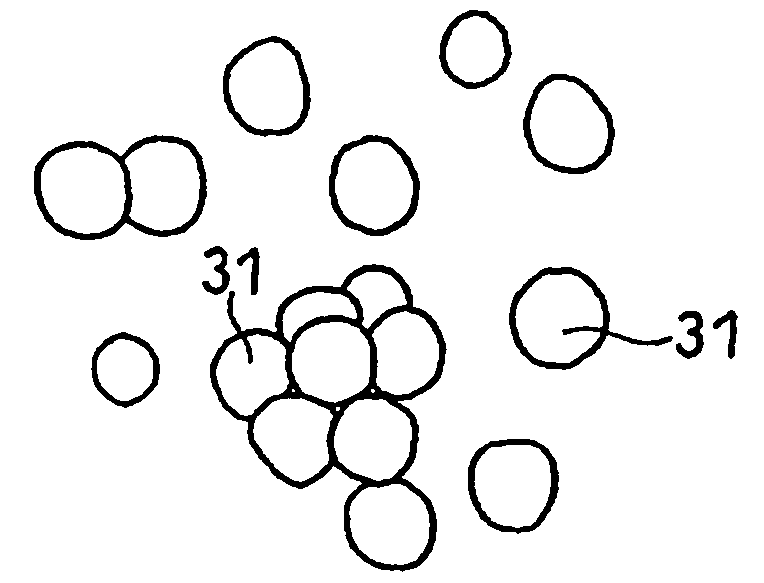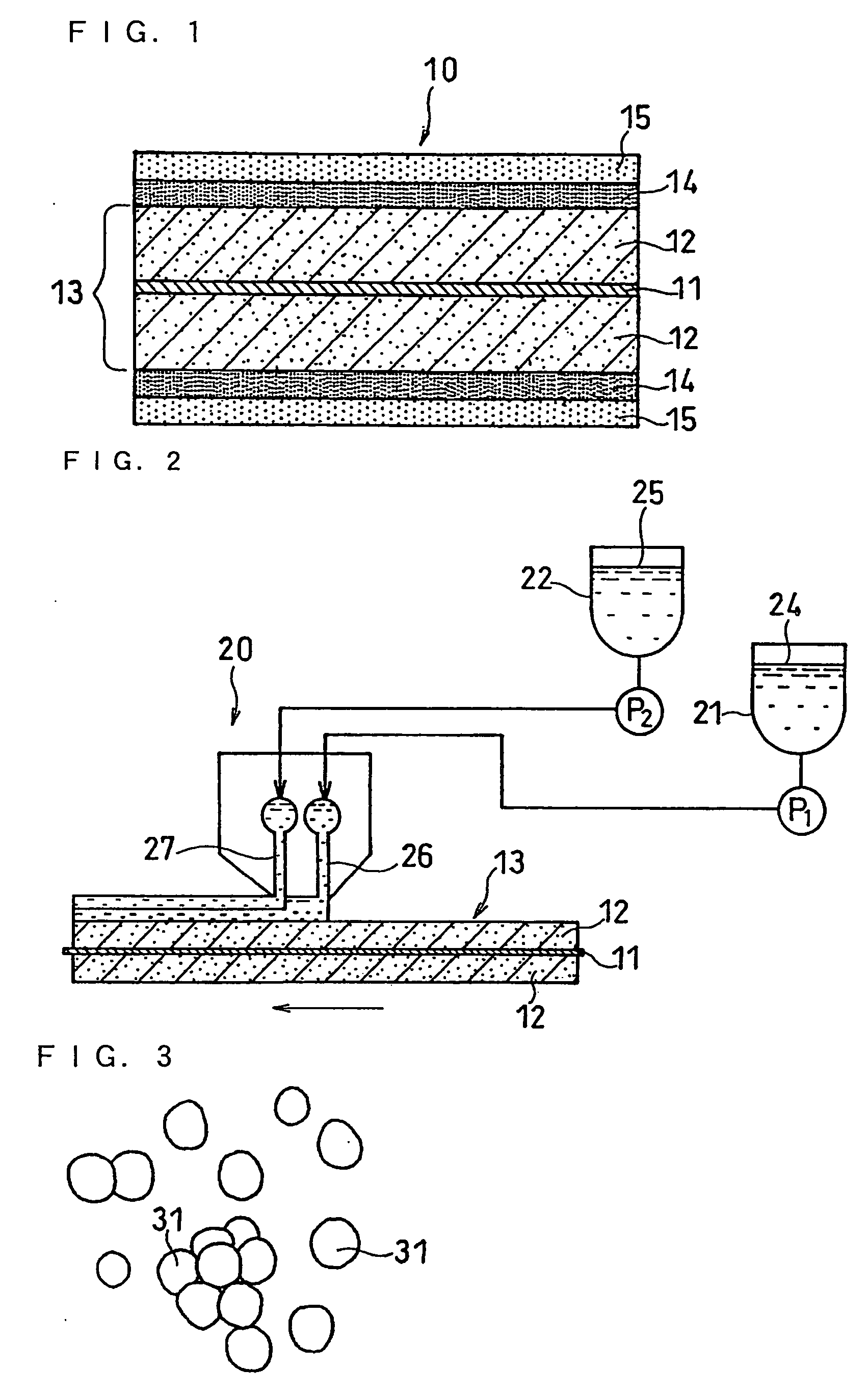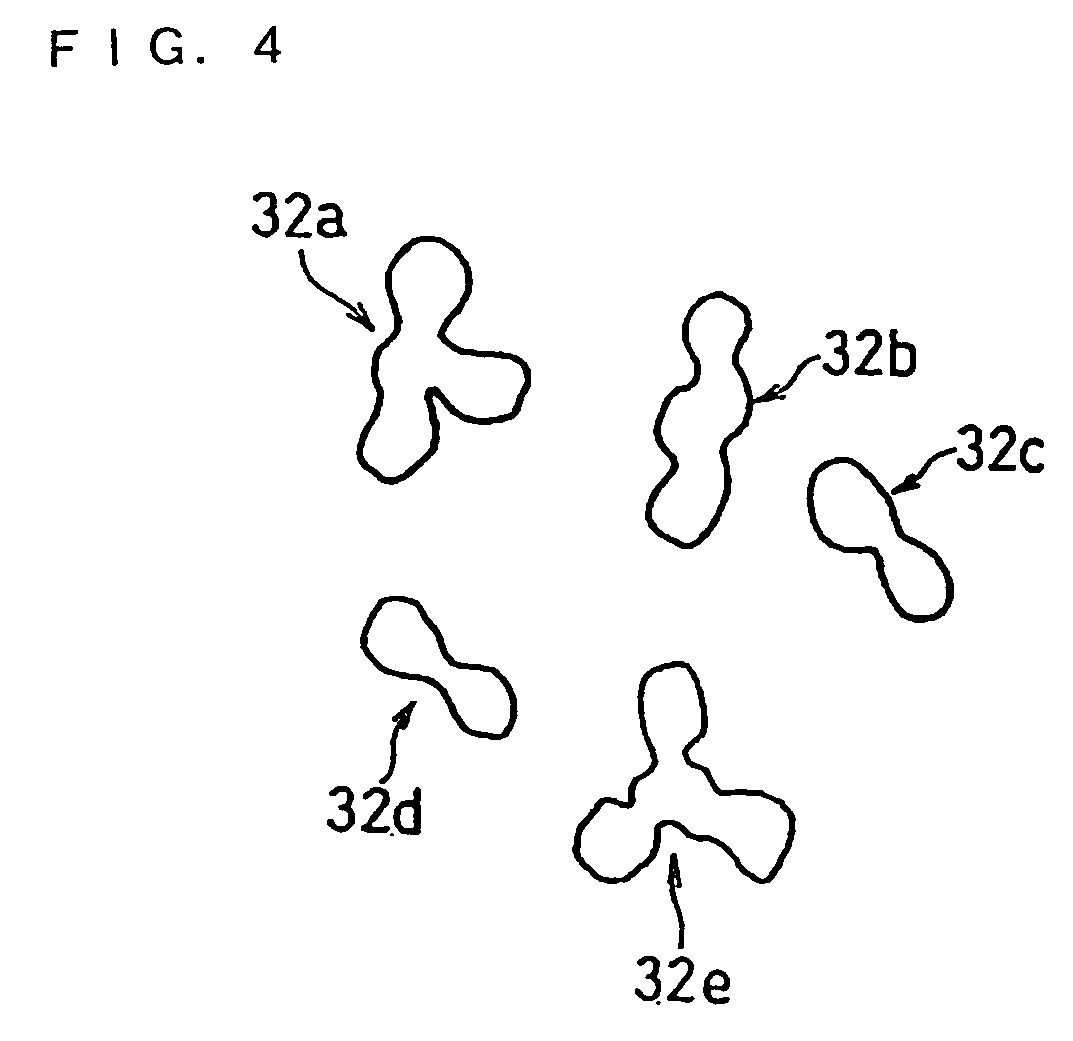Spirally-wound non-aqueous secondary battery and electrode plate used therefor
a secondary battery, non-aqueous technology, applied in the direction of cell components, final product manufacturing, sustainable manufacturing/processing, etc., can solve the problems of clogging the micropores, brittle structure, and melting of the separator
- Summary
- Abstract
- Description
- Claims
- Application Information
AI Technical Summary
Benefits of technology
Problems solved by technology
Method used
Image
Examples
example 1
(i) Preparation of First Slurry
[0070] To 100 parts by weight of alumina particles (metal oxide particles) with an average primary particle size of about 0.1 μm were added 4 parts by weight of a modified acrylonitrile rubber (first binder) and an appropriate amount of N-methyl-2-pyrrolidone (NMP: dispersing medium), which were mixed with a stirrer. The resulting mixture was introduced into a beads mill with an internal volume of 0.6 L, 80% of which was filled with zirconia beads having a diameter of 0.2 mm so as to allow the alumina particles to thoroughly disperse in the mixture to give a first slurry. The modified acrylonitrile rubber used here was BM-720H (trade name) available from Zeon Corporation, Japan.
(ii) Preparation of Second Slurry
[0071] To 100 parts by weight of polyethylene particles (resin particles) with an average primary particle size of about 0.5 μm were added 10 parts by weight of a polyacrylic acid derivative (second binder) and an appropriate amount of N-met...
example 2
[0076] A combined electrode plate was produced in the same manner as in EXAMPLE 1 except that the first porous membrane had a thickness of 10 μm.
example 3
[0077] A combined electrode plate was produced in the same manner as in EXAMPLE 1 except that the first porous membrane had a thickness of 20 μm.
PUM
| Property | Measurement | Unit |
|---|---|---|
| thickness | aaaaa | aaaaa |
| total thickness | aaaaa | aaaaa |
| thickness | aaaaa | aaaaa |
Abstract
Description
Claims
Application Information
 Login to View More
Login to View More - R&D
- Intellectual Property
- Life Sciences
- Materials
- Tech Scout
- Unparalleled Data Quality
- Higher Quality Content
- 60% Fewer Hallucinations
Browse by: Latest US Patents, China's latest patents, Technical Efficacy Thesaurus, Application Domain, Technology Topic, Popular Technical Reports.
© 2025 PatSnap. All rights reserved.Legal|Privacy policy|Modern Slavery Act Transparency Statement|Sitemap|About US| Contact US: help@patsnap.com



